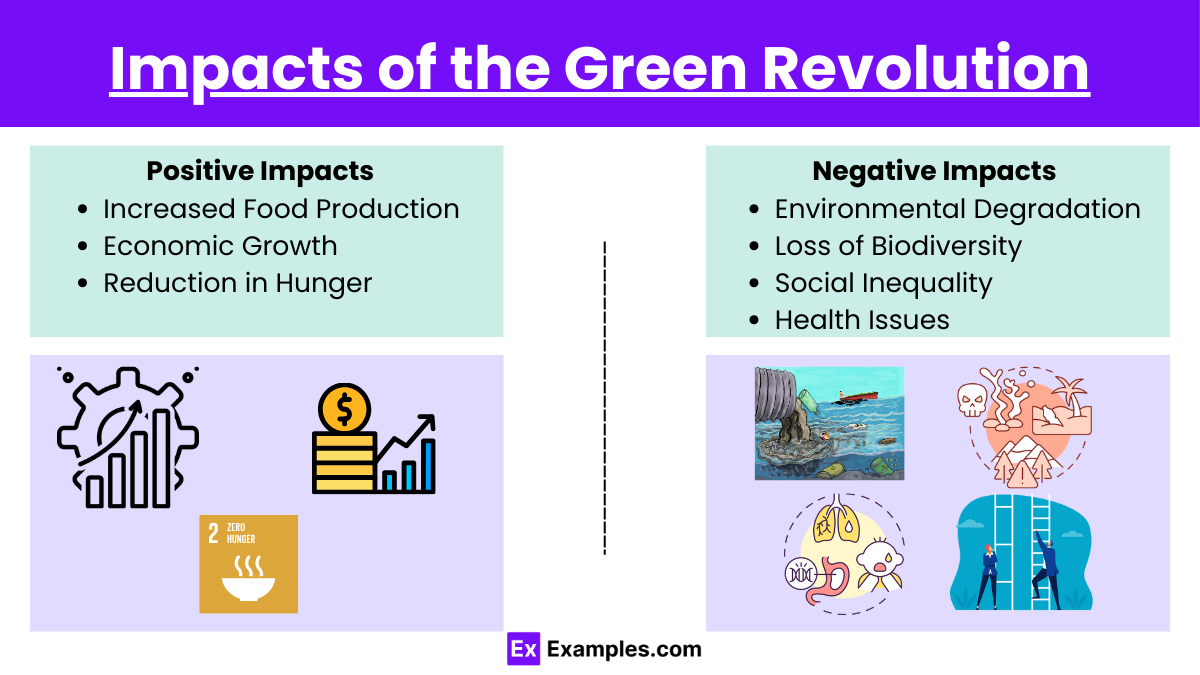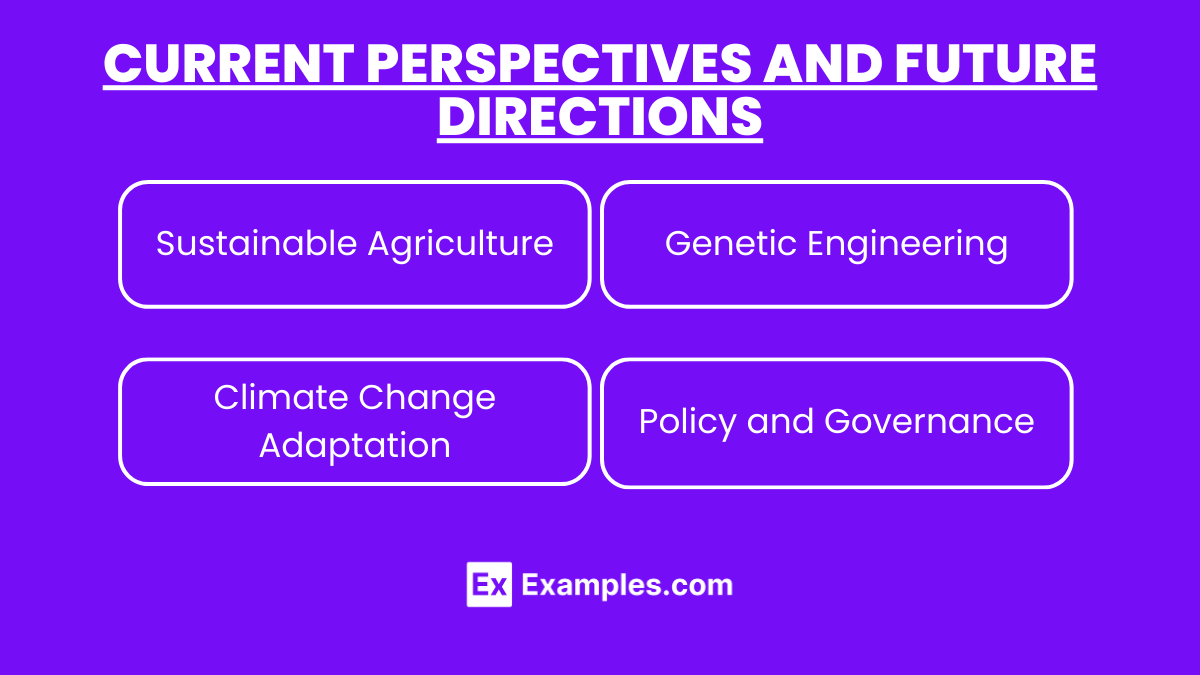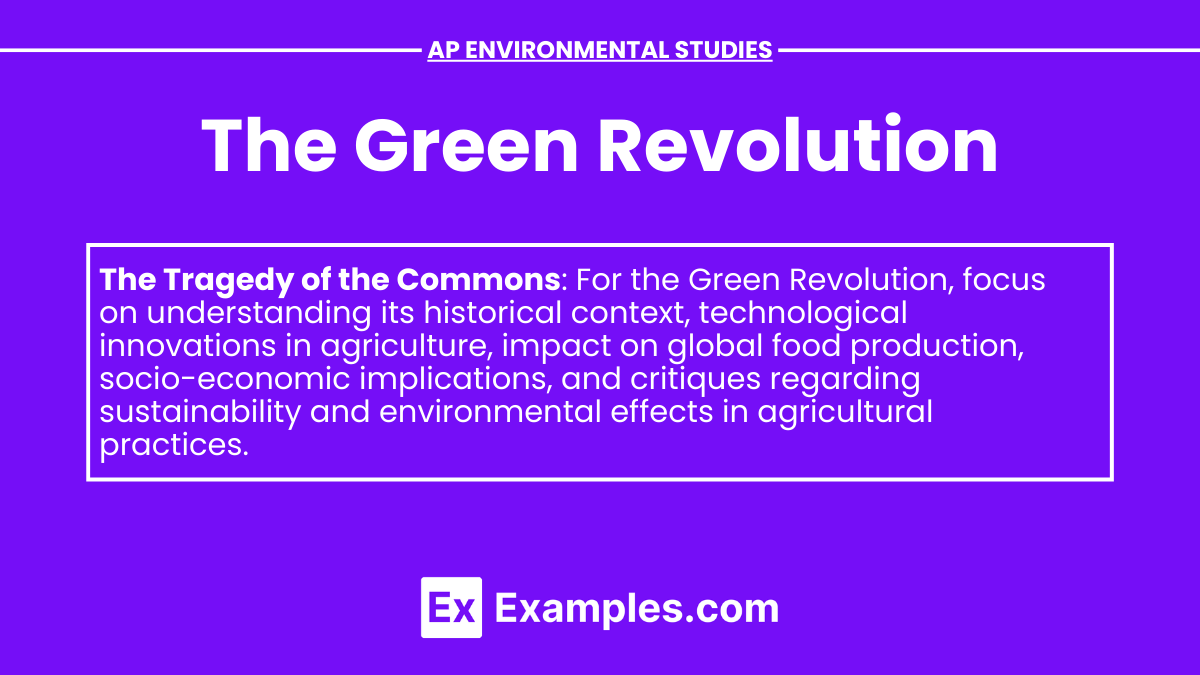The Green Revolution, initiated in the mid-20th century, revolutionized agriculture with high-yield crop varieties, chemical fertilizers, and advanced irrigation techniques, dramatically increasing food production to support a growing global population. While it bolstered food security, the revolution also had significant ecological impacts, including ecosystem degradation, biodiversity loss, and disruption of the biosphere. Intensive farming practices led to soil and water pollution, reduction in genetic diversity among crops, and the widespread use of pesticides and fertilizers, challenging the sustainability of agricultural ecosystems and the health of the biosphere.
Learning Objectives
The learning objectives for the Green Revolution include understanding its origins and key components, such as high-yield varieties and chemical inputs. Students should grasp its ecological and socioeconomic impacts, including environmental degradation, biodiversity loss, and social inequalities. They should be able to analyze case studies, discuss sustainable agricultural practices, and explore future directions like genetic engineering and climate adaptation. Emphasis on key terms like ecosystem, biosphere, and genetic diversity is essential for a comprehensive understanding.
Definition and Overview
- Green Revolution: A period marked by the introduction of high-yielding crop varieties, increased use of chemical fertilizers and pesticides, and improved irrigation techniques, which began in the 1940s and significantly boosted agricultural productivity worldwide, especially in developing countries.
Historical Background
- Origins: Initiated in Mexico in the 1940s with the work of Dr. Norman Borlaug, who developed high-yield, disease-resistant wheat varieties.
- Expansion: Spread to other parts of the world, particularly India and the Philippines, in the 1960s and 1970s.
Key Components
- High-Yield Varieties (HYVs)
- Genetic Improvement: Development of new crop varieties that produced more grain per plant.
- Examples: Wheat, rice, maize.
- Chemical Fertilizers
- Nitrogen, Phosphorus, Potassium (NPK): Essential nutrients provided to crops to enhance growth.
- Impact: Increased crop yields but led to soil degradation and water pollution due to runoff.
- Pesticides
- Purpose: Control pests and diseases that damage crops.
- Impact: Improved crop protection but caused ecological harm and human health risks.
- Irrigation Techniques
- Methods: Use of advanced irrigation methods like drip and sprinkler systems to ensure adequate water supply.
- Impact: Enhanced water use efficiency but sometimes led to waterlogging and salinization.
- Mechanization
- Farm Machinery: Introduction of tractors, harvesters, and other machinery to increase efficiency.
- Impact: Reduced labor needs but increased dependence on fossil fuels.
Impacts of the Green Revolution

- Positive Impacts
- Increased Food Production: Significant rise in crop yields and food security in many countries.
- Economic Growth: Enhanced rural incomes and stimulated economic development in agricultural regions.
- Reduction in Hunger: Helped many countries achieve self-sufficiency in food production.
- Negative Impacts
- Environmental Degradation: Overuse of chemical fertilizers and pesticides led to soil and water pollution.
- Loss of Biodiversity: Focus on a few high-yield varieties reduced genetic diversity in crops.
- Social Inequality: Benefited larger landowners more than small farmers, widening economic disparities.
- Health Issues: Exposure to harmful chemicals affected farm workers and local communities.
Case Studies
- Mexico
- Initiation: First country to adopt Green Revolution techniques.
- Outcome: Transformed from a wheat importer to a wheat exporter.
- India
- Adoption: Embraced Green Revolution in the 1960s, particularly for wheat and rice.
- Outcome: Achieved self-sufficiency in food production by the 1970s, but faced challenges like water scarcity and pollution.
- Philippines
- Focus: Introduction of high-yield rice varieties (IR8).
- Outcome: Substantial increase in rice production, leading to food security improvements.
Current Perspectives and Future Directions

- Sustainable Agriculture: Emphasis on organic farming, integrated pest management, and conservation tillage to mitigate environmental impacts.
- Genetic Engineering: Development of genetically modified crops for better yields and resistance to pests and diseases.
- Climate Change Adaptation: Breeding crops that can withstand extreme weather conditions and reduced water availability.
- Policy and Governance: Implementing policies that support small farmers, equitable resource distribution, and sustainable practices.
Important Figures
Norman Borlaug
Norman Borlaug, an American agronomist and humanitarian, is often called the “father of the Green Revolution.” His work on developing high-yield, disease-resistant wheat varieties significantly increased food production worldwide, especially in developing countries. Borlaug’s innovations helped save millions from famine, earning him the Nobel Peace Prize in 1970.



